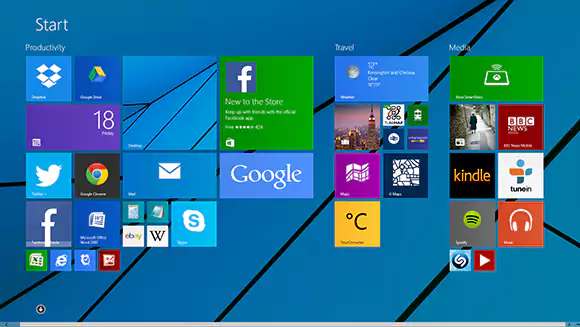
Microsoft Windows 8.1 Update – A Quick Look
Windows 8.1, the latest version of the Windows operating system, was released on October 17, 2013. This operating system is an upgrade to Windows 8.0, which was released a year prior. There are several new features and improvements in Windows 8.1, which I will outline below.
Pros:
- Start button: One of the most significant changes in Windows 8.10 is the return of the Start button. This will be a welcome change for many users who were unhappy with the absence of the Start button in Windows 8.0.
- Menu: The Start menu has also been improved in Windows 8.1, making it more intuitive and user-friendly.
- Apps: Windows 8.1 has a number of new apps, including the Bing Food & Drink app, which is designed to help you discover and plan your next meal. The Bing Health & Fitness app, on the other hand, is designed to help you stay in shape.
- Speed: Windows 8.1 has been designed to be faster and more responsive than its predecessor. This is thanks to the improvements made to the Direct X technology.
- Resources: Windows 8.10 requires fewer resources than Windows 8.0, meaning that it will run on older computers with lower specifications.
- RAM: The minimum RAM requirement for Windows 8.10 is only 1 GB of RAM (#ad), making it accessible to a wider range of users.
Cons:
- Upgrade: Upgrading to Windows 8.1 from Windows 8.0 can be a complex and time-consuming process. It may also require additional hardware upgrades in some cases.
- Cost: Windows 8.10 is not a free upgrade, so users will have to pay for the software.
- Updates: Windows 8.1 is likely to receive more frequent updates than Windows 8.0, which can be a disadvantage for some users.
- Hard Drive: Windows 8.10 requires a hard drive with a minimum of 16 GB of free space, which can be a problem for users with limited hard drive space.
Overall, Windows 8.1 is an excellent operating system that offers a number of new features and improvements over Windows 8.0. The Start button, improved Start menu, new apps, and faster performance are all great additions to the operating system. However, users should be aware of the potential challenges of upgrading to Windows 8.10, including the cost, the time it takes to upgrade, and the need for additional hardware upgrades (#ad) in some cases. If you are looking for an operating system that is fast, responsive, and user-friendly, Windows 8.10 is definitely worth considering.